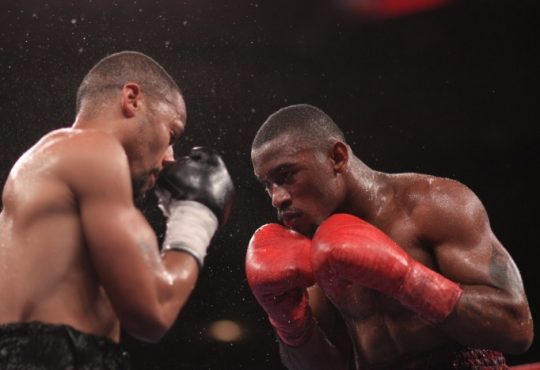
How to Wrap Your Hands for Boxing and MMA
You know, after spending two decades around gyms, rings, and fight camps, I’ve learned one thing the hard way: nothing sabotages a fighter’s career faster than neglected hands. Wrapping your hands isn’t just a warm-up ritual—it’s the foundation of everything you throw. Think about it. Every punch channels force straight through your knuckles, down into the wrist, and across those delicate little ligaments. Without proper support, that chain snaps somewhere, and usually it’s your hand paying the price.
I’ve seen talented boxers and MMA fighters sidelined not because they lacked skill, but because they didn’t respect the small details. A good wrap stabilizes the wrist so it doesn’t buckle on impact, adds a protective cushion for the knuckles, and keeps joints and tendons aligned under pressure. Gloves might look like the star of the show, but really, they’re just the outer shell. The hand wrap is the scaffolding inside that makes the whole structure work.
Personally, I won’t even touch the heavy bag until my hands are wrapped. The difference is night and day—punches land cleaner, the glove molds to the hand better, and mentally, I feel locked in, ready. Once you’ve experienced that kind of security, training bare or with sloppy wraps feels reckless. Proper wrapping isn’t a detail. It’s a fighter’s insurance policy.
Why Hand Wrapping Matters in Boxing and MMA
You’d be surprised how many tough guys I’ve seen walk into a gym, lace up gloves, and swing away without bothering to wrap. Two weeks later, they’re nursing a swollen wrist or a hairline fracture across the knuckles. The hands just aren’t built for that kind of repeated blunt trauma. In combat sports, every punch you throw sends shock straight through small joints, tendons, and ligaments—and once something gives out, it doesn’t heal quick.
Now, here’s where wraps earn their keep. They don’t just add soft padding; they lock the bones and joints together so the hand becomes a single, solid unit. That stability means less chance of sprains and a lower fracture risk. On top of that, wraps fill out the glove, so your fist sits snug, almost like it’s molded into place. You feel the difference the moment you land a heavy cross—the power transfers clean, without that jarring sting.
In my own training, I learned early that skipping wraps was a shortcut that always backfired. The fighters who stay consistent with wrapping not only hit harder but also stay healthier longer. At the end of the day, hand wraps aren’t a formality—they’re protection, plain and simple.

Types of Hand Wraps Explained
I’ve been around gyms long enough to see every kind of hand wrap under the sun, and trust me, the type you use really changes the feel of your training. Cloth wraps are where most people start. They’re cheap, reusable, easy to throw in the wash. The catch? They wear down fast, and once they get thin, you’re basically punching with a sock on your hand.
Now, Mexican-style wraps—that’s where things get serious. They’ve got that little bit of stretch, so you can contour them right to your knuckles and wrist. I like how they give a snug fit without choking circulation. They also tend to last longer, though once the elasticity’s gone, they’re finished. Personally, these are what I use day in and day out.
Quick wraps are like the microwave dinner of boxing gear—fast, convenient, but never quite the real deal. Slip them on, tighten the strap, and you’re set. Great for fitness classes or when you’re short on time, but not enough support for sparring or hard bag work.
Then there’s gauze and tape—the pro setup. That’s fight-night territory. It’s lightweight, custom to your hand, and honestly the best protection you’ll ever get. But it’s a one-and-done deal, and you’ll need someone who knows what they’re doing to put it on. For training, I’ll stick with my Mexican wraps any day—they’ve never let me down.
Choosing the Right Wraps for You
I’ll be blunt—hand wraps are like shoes. The wrong pair makes every step miserable, the right pair disappears on you because they just work. Over the years, I’ve gone through more wraps than I can count, and what I’ve found is that the choice usually comes down to length, material, and what kind of training you’re heading into that day.
Most fighters stick with 180-inch wraps, and for good reason. They’re long enough to give the wrist real support, layer the knuckles, and still tuck away clean under the glove. Anything shorter tends to feel like you’re cutting corners. Material is where things get interesting. Cotton wraps feel traditional—durable, dependable, but they take time to break in. Stretch (people call them Mexican-style) mold to your hand better, almost like they’re tailor-made, though it’s easy to over-tighten them. I’ve done that more than once and ended up peeling them off mid-session with numb fingers.
The little details matter too: a solid thumb loop that doesn’t twist, Velcro that doesn’t die after a month, and the brand’s cut. I’ve had wraps from Ringside last years, while a cheaper pair frayed out after two weeks on the heavy bag. At the end of the day, wraps are personal. My best advice? Experiment until you find a pair that feels like an extension of your hand. Once you do, you’ll know.

Step-by-Step Guide: Wrapping Hands for Boxing
I’ve wrapped hands in more locker rooms than I can count, and the process has become second nature. Start by hooking your thumb through the thumb loop—always keep the fabric flat, no twists. From there, circle the wrist two or three times. That base is everything; it’s what keeps your wrist from buckling the moment you drive a cross through the bag.
Now, work the wrap up to the knuckles. I like laying down three layers here. Too little and you’ll feel bone on leather, too much and your fist feels like a pillow—balance is key. After that, thread the wrap between the fingers, starting between pinky and ring. It’s a small step but it locks the whole hand in, preventing those awkward shifts once you start punching.
Once the fingers are secured, bring the fabric back down, cross over the wrist, and finish tight with the Velcro strap. Here’s my personal check: make a fist, then open your hand wide. The wrap should compress without cutting off blood flow. When it feels like the glove is part of you, that’s when you know you’ve done it right.
Step-by-Step Guide: Wrapping Hands for MMA
When I first crossed over from pure boxing gyms into MMA training, I botched my wraps constantly. I’d make them too bulky—great for smashing pads, terrible for grabbing a wrist or locking up in the clinch. Over time, I figured out that MMA wraps need to be a compromise: enough protection to throw hard punches, but flexible enough for grappling and hand fighting.
Start simple: thumb in the loop, a couple of snug turns around the wrist to set your base. From there, cover the knuckles lightly—two passes is usually plenty. You want a bit of padding, but not that thick boxing cushion that makes your fist feel like a brick. Now, here’s where it gets tricky. Thread the wrap between the fingers, but leave room to open your hand fully. If your fingers feel trapped, you won’t be able to grip for underhooks, clinches, or chokes.
Once the fingers are set, sweep diagonally across the thumb—I never skip this. It keeps the joint stable when you’re posting on the mat or parrying punches. Finish with steady overlaps back down at the wrist, close it off with the Velcro, and check it: make a fist, then spread your hand wide. It should feel solid yet free. My personal test is simple—I grab the cage or a partner’s wrist. If I can squeeze without restriction, I know the wrap’s done right.
Wrapping Too Tight — Cutting Off More Than Just Circulation
Let me be blunt: wrapping your hands too tight is one of the fastest ways to wreck your training before it even starts. I’ve seen it too many times—fighters walk into the gym thinking tighter means safer. Nope. What you’re actually doing is slowly strangling your own hands. I’ve done it myself (early on, before I knew better), and by round three? Numb fingers, aching wrists, and a strange tingling that definitely shouldn’t be there.
You see, when your wraps are too tight, you’re cutting off blood flow—circulation drops, grip strength suffers, and you end up compensating with your shoulders or elbows, which leads to—you guessed it—strain injuries. I once saw a guy wrap so tight his knuckles actually turned pale before he even hit the bag. It’s not toughness. It’s a mistake, plain and simple.
The worst part? You usually don’t realize it until mid-session, when the damage is already done. I always tell my fighters: your wraps should feel snug, not restrictive. You want support, yes—but you also want to feel your hands. Think of it like lacing up boots: tight enough to protect, loose enough to move.
So yeah, check your wraps before you glove up. Shake your hands out. Make a fist. If it feels like your fingertips are swelling, unwrap and do it again. Trust me—nailing this one detail will save you weeks of pain and bad habits down the line.
Layer Evenly or Regret It Mid-Fight
Listen, after 20 years in and out of gyms—from basement setups in Philly to proper camps in Vegas—I’ve seen one mistake more times than I can count: lopsided wraps. You think a tiny bump doesn’t matter? Wait until you start cracking pads and feel that pressure dig into your wrist or, worse, numb out your fingertips halfway through a round.
Now, I’m not talking about some perfect wrap that looks pretty on Instagram. I’m talking about balance. Even layering keeps your knuckles protected and your joints aligned—that’s what actually saves your hands over time. I’ve had rookies show up thinking tighter equals better, but they end up with hot spots, blisters, or wraps that shift as soon as they sweat.
What I’ve found works best is starting slow. First few wraps over the knuckles? Smooth and even—no folds, no overlaps thicker on one side than the other. From there, each pass should feel like you’re building a second skin, not stacking a damn bandage tower. You’ll feel the difference when you punch. It should feel like a uniform pressure across your hand—not some weird lump throwing off your fist alignment.
I always pre-roll my wraps, too. Takes an extra minute, but man, it makes things smoother when you’re in the zone. You don’t wanna be fighting your wrap before you fight a person.
How to Wash Hand Wraps Without Ruining Them
I used to just toss my wraps into the gym bag after training—sweaty, twisted up, and forgotten. Big mistake. Within a week, they’d stink like mildew and feel like cardboard. You see, hand wraps absorb everything: sweat, bacteria, blood if you’re sparring hard… and if you don’t clean them right, they break down fast.
Now, here’s what I do—and trust me, this works. First, I never throw them in the wash loose. Wrap them up neatly or, better yet, toss them in a mesh laundry bag (saves a ton of grief when the Velcro latches onto your socks). I wash them on cold with a fragrance-free detergent—something gentle but effective. You don’t want your wraps smelling like lavender and still harboring bacteria.
Drying? Don’t even think about the dryer. Heat wrecks the elasticity. I hang mine up—preferably outside if it’s sunny, or on a coat hanger over a door. They dry fast. Smell better too.
I’ve found that with this routine, my wraps last easily 6–8 months—even training 4–5 days a week. Bottom line? Clean wraps are durable wraps. Ignore them, and you’ll be replacing them monthly.




